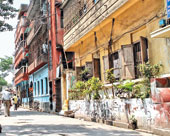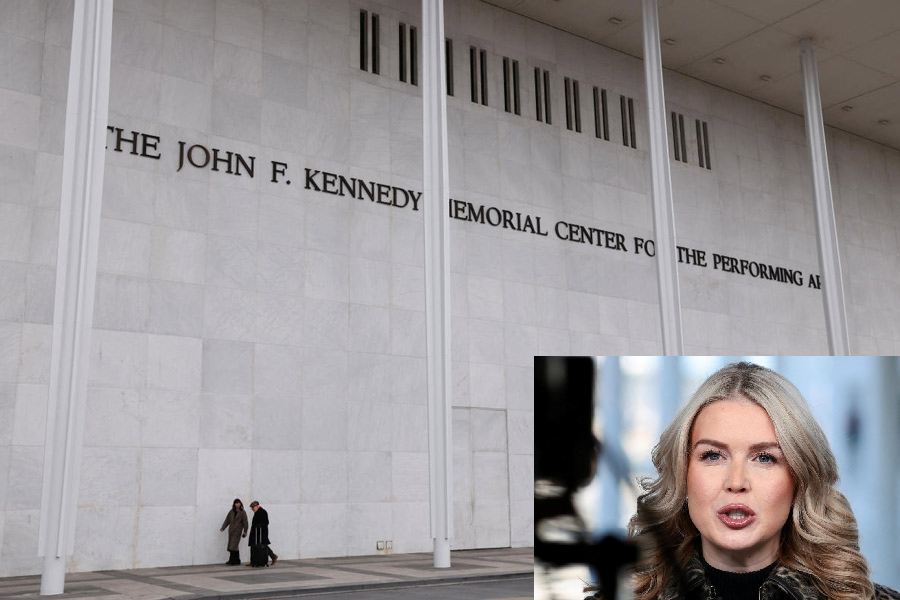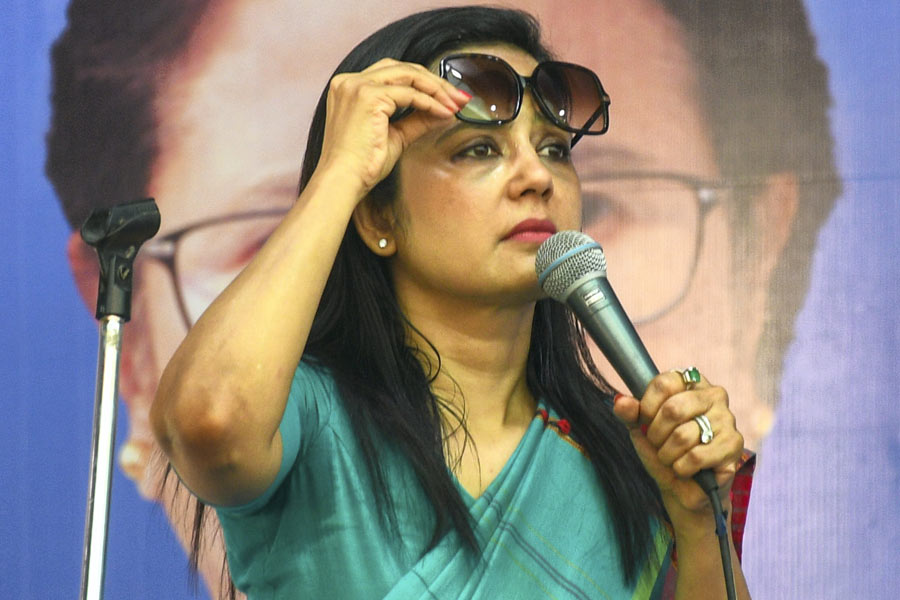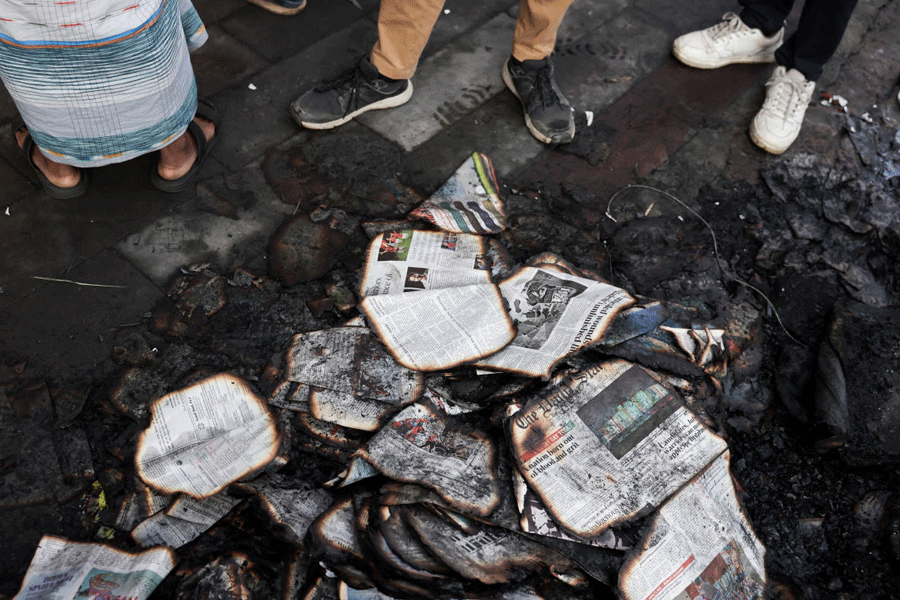 |
 |
 |
| Vignettes of Marhatta Ditch Lane in Bagbazar. Pictures by Bhubaneswarananda Halder |
Indistinguishable from any other dingy north Calcutta lane, its name is what sets it apart. It is a name loaded with memories and the history of the city before it flowered into one of the brightest jewels of the Raj. Its name harks back to the 18th century, when the Maratha invaders were so dreaded that mothers used to invoke the “bargis”, as these marauders were known in Bengal, in their lullabies to put restive children to sleep.
Marhatta Ditch Lane in the heartland of Bagbazar runs parallel to Galiff Street, which in turn, is adjacent to the canal. At either end of its length are Akshay Bose Lane in the east and Nandalal Bose Lane in the west, which makes it a Kayastha stronghold. However, the lane with a few notable exceptions is home to mostly working-class people, many of them from Bihar (Shaw is the most visible surname), who having lived here for two generations and more, are indistinguishable from their Bengali counterparts.
Janoji, son of Raghuji Bhonsle, at the head of the Maratha force, plundered the country from Balasore to Rajmahal around the mid-18th century. Those who lived on the western side of the Hooghly crossed over to Calcutta and sought British protection. Alivardi Khan granted them permission to dig an entrenchment, and the original plan was that it would encircle the area from Sutanati in the north to Govindapur in the south. But instead of extending it up to seven miles, work on the ditch stopped after six months, as the Marathas had put a stop to their depredations here, and only three miles of it was ready. Charles Stewart in his History of Bengal (1813), wrote: “It (the ditch) also ran along the present Circular Road. It is said 600 coolies and 300 Europeans were engaged in this work, the earth excavated being used to form a road on the inward or town side.” The ditch was filled up between the late 19th century and around 1917. Thus was formed Upper Circular Road, renamed Acharya Prafulla Chandra Road in 1958.
Marhatta Ditch Lane is lined on both sides with rows of tile- or tin-roof huts, a few of them double-storeyed, at its Nandalal Bose Road end. Cemented alleys furrow through some of these hovels and end in a tiny tulsi shrine with two large-headed lamps standing guard on either side. It is evening and men in small groups gather around tea stalls after a hard day’s work. Families occupy single rooms that face the road itself. A large crumpled bed, which is a substitute for a living room, is the main piece of furniture in these boxes. These are stuffed with other essentials as well, among which a colour TV set occupies pride of place. Women do household chores on the threshold. The men work as electricians, washermen, rickshawpullers, small-time jewellers, traders and dealers in junk, shopkeepers or as helps in workshops, like the biggish one crushed between huts. Despite poverty it is surprisingly clean here.
Some men react with hostility to my curiosity, but Sanjay Patra in his 50s, explains that all the slum dwellers are thika tenants and their original landlords were eminent men like Butto Kristo Pal and Nandalal Bose. He says nothing much has changed here and only a single block of flats has come up in this lane. Most men have heard the story of the Marahatta ditch from their grandfathers and are eager to relate it.
Double-storeyed Mohun Aloy with its double bays, long verandah, windows with sunshades and shutters and terrace can almost be mistaken for a stately home in distress in this depressed neighbourhood. Beside it is a clump of trees that shake their heads in the dark. Behind it is Indu Villa, a misnomer for a small, plain house overshadowed by Mohun Aloy. The “villa” is not visible from the lane, but its name is emblazoned on the remains of a wall.
On a marble plaque beyond the entrance of Mohun Aloy are inscribed the words Mahim Ghosh. Adjacent to the staircase is a longish room whose walls have been taken over by deities. It looks like a workshop with one big piece of machinery. A woman, who was inside, goes upstairs to call her employer. He is a neatly turned out Badrinarayan Ghosh, 71, son of Mahim Ghosh, a rubber and textile technologist. He was an employee of the Tyre Corporation of India.
 |
The house is a hundred and their guru, Sri Sri Mohunananda of Deoghar, used to visit it. Hence its name. His grandfather was a businessman and he had property in Gaya and Aurangabad in Bihar. His father too enjoyed that privilege till zamindari was abolished. His uncle used to be his neighbour till he sold his property. He says only some Biharis are old residents.
Further down at the crossing of Mahatma Sisir Kumar Sarani is a brand new house that looks more like a cage with its heavily barred windows. The house is named Harendra Smriti and the owner is Siben Dawn, 68, a happy grandfather quite content running his cosmetics manufacturing business. He did not reveal its brand name but one assumes that it sells for he has acquired the house on the opposite side as well. The property may not be old but the Dawns are old residents. Dawn says the Kundus, also old-timers, live in the opposite building.
The Chatterjee family — several branches of it — too has been around for close to two centuries. They own several houses here. Swapan or Alok was the first Chatterjee I met, and he lives in Durga Charan Chatterjee Lane named after his forefather. He lives on the top floor of his house with his son. He is 68 and is seriously ill, but sitting barebodied on his four poster, he makes light of it.
He says Durga Charan was a resident of Dhaka Bikrampur, and he came with his sons and their wives to this neighbourhood about two centuries ago. He made his money by starting a business in ayurvedic medicine and later gifted the land on which the Galiff Street tram depot came up. The other half of the plot belonged to the Sovabazar Debs. His cousin Ranjit, 75, who used to be a cashier with Jugantar Patrika, lives in a larger house named Krishna Dham with a tiny thakurdalan in Marhatta Ditch Lane. He celebrates Annapurna puja there.
After Nebubagan Lane, the houses look even more shabby. Opposite a large closed factory is a cluster of crumbling houses that show signs of past prosperity. This used to be the property of the well-known Bose family, subsequently sold to others. Thereafter the houses were partitioned, and walls have sliced them in the oddest manner conceivable. Inside the first of these, a maid washes clothes in a courtyard the size of a postcard. Rita Chatterjee, nee Banerjee says her grandfather Asidhari Banerjee, who was a policeman, had bought it, and now she and her cousins share it. She offers me a seat, a large wooden box. Her uncle, Ram Manikya Banerjee, 75, who dabbles in art, says politics does not matter here much. So it is peaceful here.
Hindi-speaking children play cricket in the lane. A dusty plaque on a crumbling wall reads: Prafulla Kamal Basu — Vakil. On a nameplate on the gate is written Alokananda Basu, Mandakini Basu, advocate, high court. Mandakini Das nee Basu, who is here to look after her bedridden mother, Alokananda, says her family, which is in the legal business, had struck roots here 150 years ago. They are from Khanakul in Hooghly. Prafulla Kamal had constructed the house.
Adjacent to this house is a cool courtyard with shade trees. At one side in a cubbyhole lives an upcountry family. They breed pigeons perhaps for the Sunday market of birds and beasts on Galiff Street. Their neighbours are the Haldars, elderly pensioners. The tin roof tenement a few yards away is a rectangle of airless single rooms. But if one peeped through an open door, one would discover a large courtyard. They still enjoy the luxury of open space.











